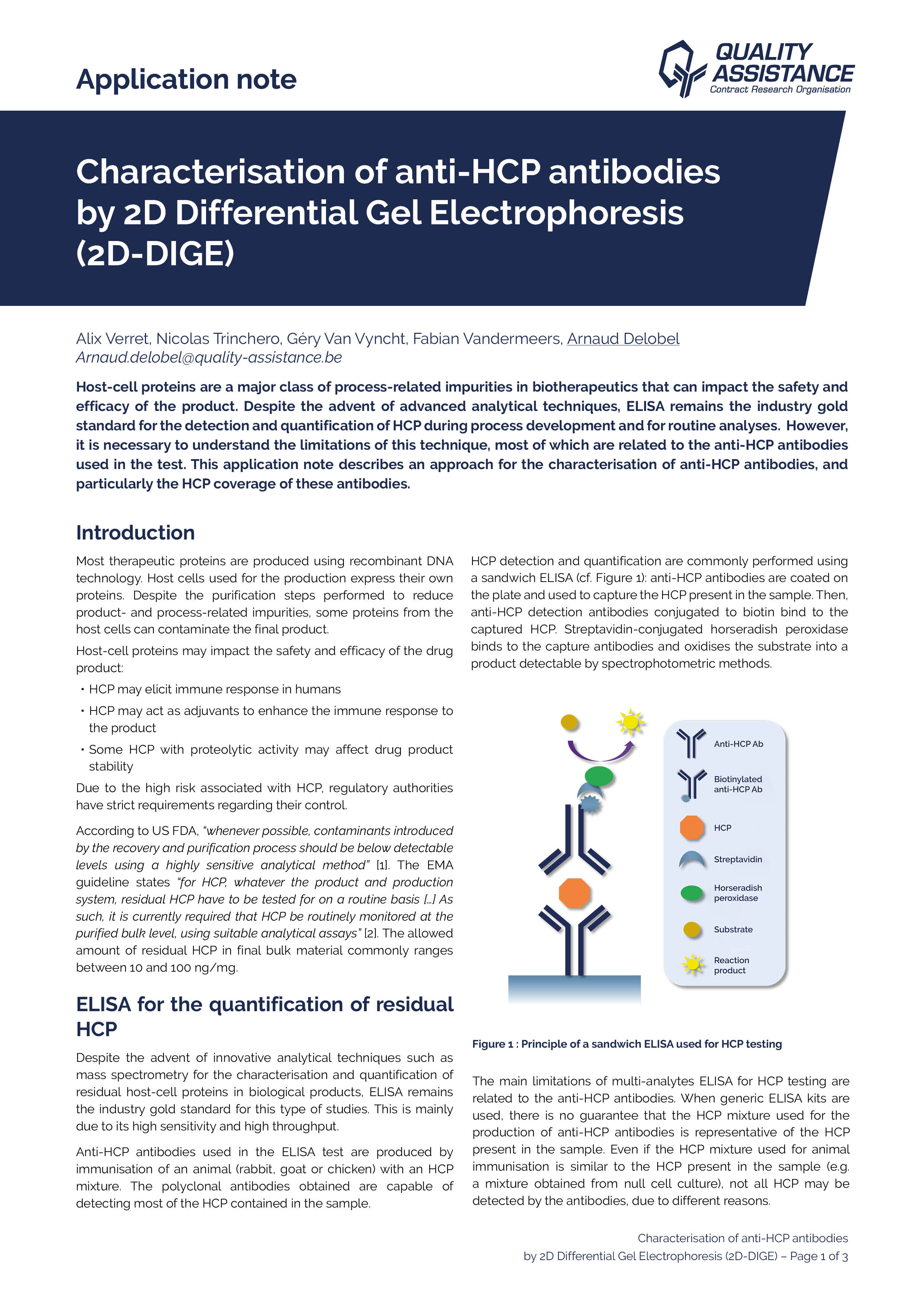Characterisation of Anti-HCP antibodies by 2D differential Gel Electrophoresis

Host-cell proteins are a major class of process-related impurities in biotherapeutics that can impact the safety and efficacy of the product. Despite the advent of advanced analytical techniques, ELISA remains as the industry gold standard for the detection and quantification of HCPs during process development and for routine testing.
However, it is necessary to understand the limitations of this technique, most of which are related to the anti-HCP antibodies used in the test. This webcast describes an alternative approach for the characterisation of the HCP coverage of these anti-HCP antibodies.
2D-DIGE is a valuable tool to evaluate the coverage of the anti-HCP antibodies. This evaluation is necessary to prove that the ELISA method that will be used for routine testing of residual HCPs in therapeutic proteins is appropriate.
Compared to traditional Western Blot approaches with visual comparisons of the gels (total proteins vs. proteins detected by the antibodies), the 2D-DIGE approach allows an easier and more reliable way of characterising the anti-HCP antibodies.
It should however be noted that even if a protein is recognised by an anti-HCP antibody on a gel, it may not be the case in ELISA, as the sandwich ELISA requires the binding of two anti-HCP antibodies per HCP molecule: this may not be possible due to insufficient tertiary space on the HCP species for antibody accessibility, or limited epitopes to bond at least two anti-HCP antibodies.
This highlights the need of orthogonal methods during early stages of development to ensure that all relevant HCPs can be correctly detected.
In addition to this application note,
Fabian Vandermeers, R&D Technical Leader, presenting this study in this video